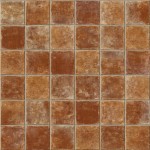Underlayment is a key component of any hardwood flooring installation. It serves as an extra layer of protection to help keep your floor in top condition and ensure it lasts for many years to come. In this article, we will take a look at what underlayment is, why it is important, and what types are available for hardwood floors.
What is Underlayment?
Underlayment is a thin layer of material that is placed between your subfloor and hardwood flooring. It helps to create a smoother, more even surface and also provides insulation, soundproofing, and moisture protection. Underlayment is usually made from synthetic materials such as polyethylene foam, polyurethane foam, or cork.
Why is Underlayment Important?
Underlayment is important because it helps to protect your hardwood floor from moisture, mold, and mildew. It also helps to provide a more even surface, which in turn helps to reduce the risk of buckling or warping. In addition, underlayment helps to reduce noise from foot traffic, making your home quieter and more comfortable.
Types of Underlayment for Hardwood Floors
There are several different types of underlayment for hardwood floors, including:
- Foam Underlayment – Foam underlayment is lightweight and easy to install, and it provides a layer of cushioning and insulation. It is also relatively inexpensive and can be used with both floating and glue-down installations.
- Cork Underlayment – Cork underlayment is made from natural cork and is a popular choice for hardwood floors. It is lightweight and easy to install, and it provides cushioning and insulation. Cork underlayment is also more expensive than foam.
- Rubber Underlayment – Rubber underlayment is made from recycled rubber and is a popular choice for hardwood floors. It is heavier than foam and cork, but it is still easy to install. Rubber underlayment provides cushioning and insulation, and it is more expensive than foam and cork.
- Felt Underlayment – Felt underlayment is made from recycled felt and is a popular choice for hardwood floors. It is heavier than foam and cork, but it is still easy to install. Felt underlayment provides cushioning and insulation, and it is more expensive than foam and cork.
Installation of Underlayment for Hardwood Floors
Underlayment for hardwood floors should always be installed according to the manufacturer’s instructions. It is important to measure the area and cut the underlayment to size before installing it. Make sure to leave a 1/4-inch gap between the edges of the underlayment and the walls of the room. This will help to prevent any movement in the flooring.
Choosing the Right Underlayment for Your Hardwood Floor
When choosing an underlayment for your hardwood floor, it is important to consider the type of flooring you are installing, the size of the area, and the cost. Foam and cork are the most popular choices, but depending on your needs, rubber or felt may be a better option. It is also important to consider the noise reduction and insulation benefits of the different types of underlayment.
Conclusion
Underlayment is an important part of any hardwood flooring installation. It helps to create a smoother, more even surface and also provides insulation, soundproofing, and moisture protection. There are several different types of underlayment available, including foam, cork, rubber, and felt. When choosing an underlayment for your hardwood floor, it is important to consider the type of flooring you are installing, the size of the area, and the cost.

/laying-laminate-flooring-5c36643946e0fb0001102b5b.jpg)
/new-floor-installation-185270632-582b722c3df78c6f6af0a8ab.jpg)











:max_bytes(150000):strip_icc()/hardwood--oak--floor-172261142-5a382e14ec2f640037fe9f90.jpg)
Related Posts








